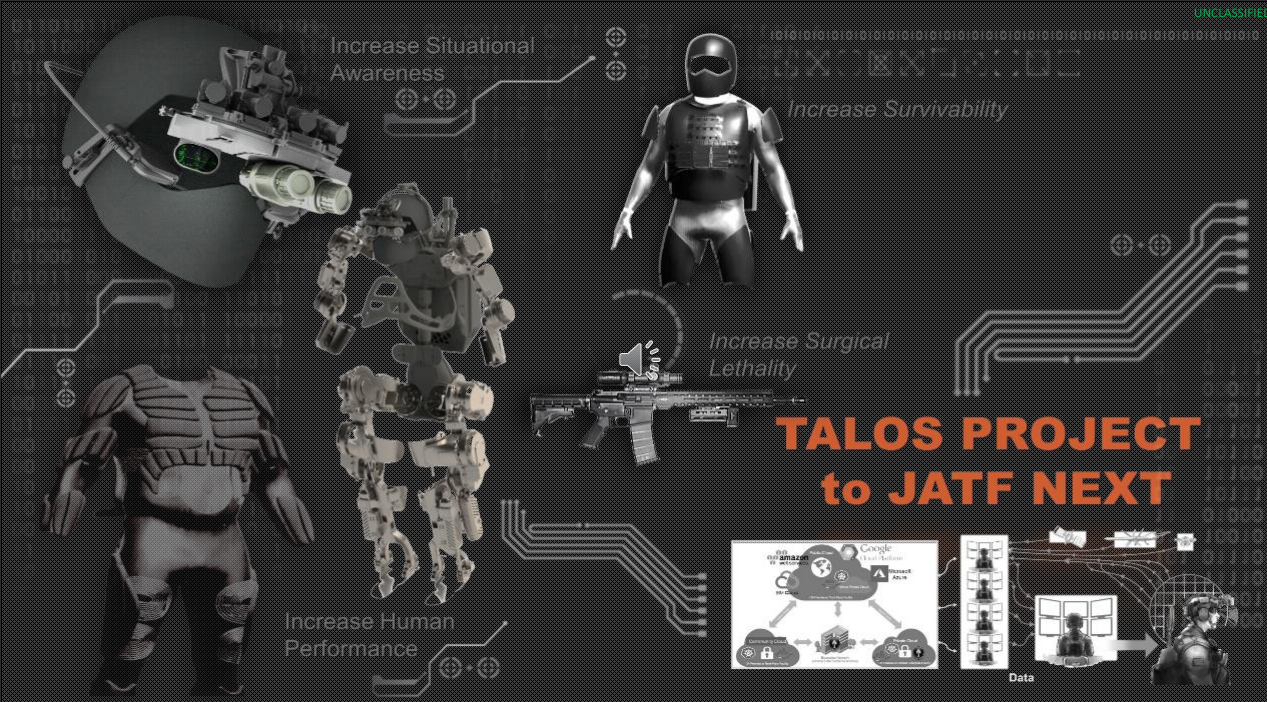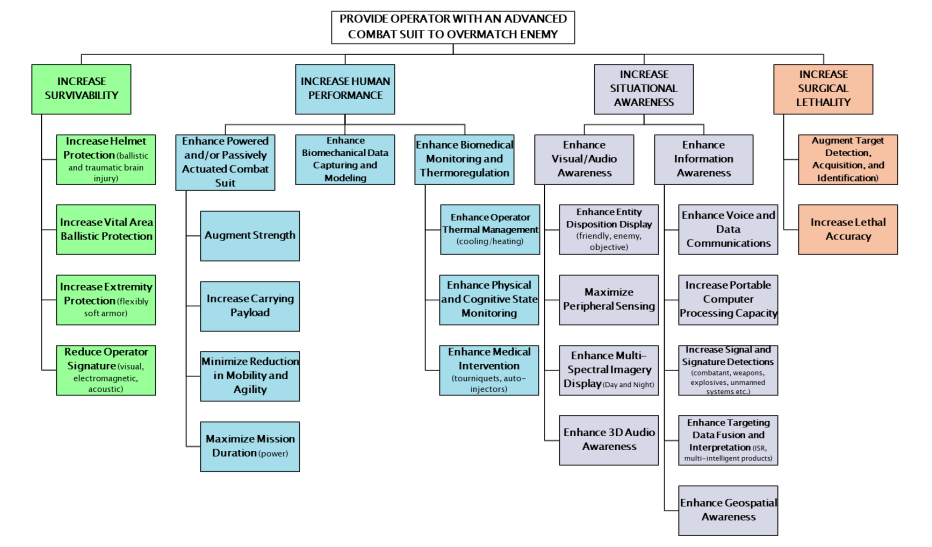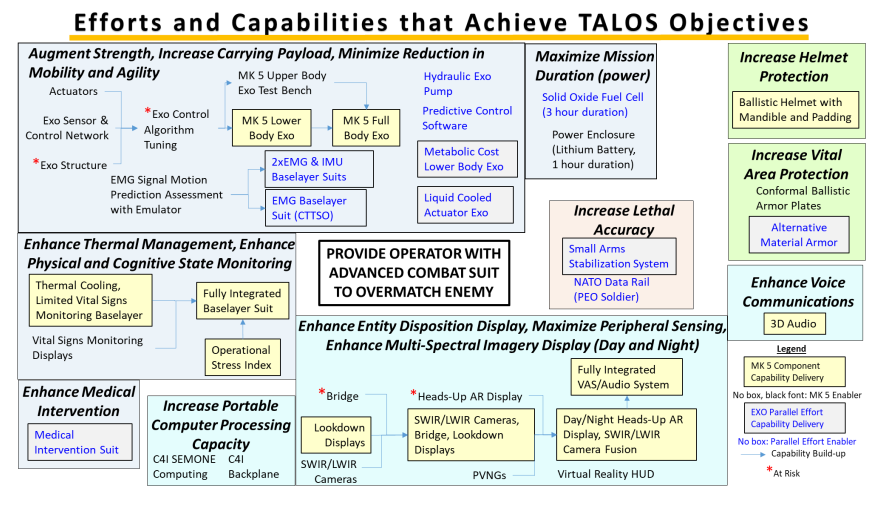Known colloquially as the “Iron Man Suit,” the Tactical Assault Light Operator Suit (TALOS) was a classic system-of-systems that includes a full-body exoskeleton, armor, a visual augmentation system, a power generation system, a baselayer garment for thermal management and vital signs monitoring, and a computing hardware and software system to enable the TALOS functionality. The TALOS system involved multiple disciplines including mechanical, electrical, control (mechatronics), optical, biomedical, human factors, network, software engineering and material science. Building the TALOS system required creative problem solving, solid decision-making, and disciplined systems engineering to bring it to fruition. To do this, I developed and executed a Systems Engineering Plan that established the organizational construct, battle rhythms, engineering processes, technical approach, the objectives, the Integrated Master Schedule, and the test and integration strategy. See this link for the Systems Engineering Plan: https://apps.dtic.mil/dtic/tr/fulltext/u2/1074457.pdf
I was the decision authority for all engineering requirements, design, test, and integration decisions. My engineering team vision was to “facilitate a shared understanding using a model-based, data-driven approach to manage risks, issues, and opportunities with respect to cost, schedule, performance, and business decisions.” I assembled a team of system engineers to employ a Model-Based Engineering (MBSE) approach. The collective team and I developed a TALOS system structural architecture with over 400 configuration items and assemblies and over 1,000 managed interfaces that are allocated to a functional architecture and traced to performance and safety requirements. This architecture along with the Computer-Aided Design models, interface control documents, and test reports comprise the TALOS Technical Data Packet our team used to manage the configuration of the TALOS system. The following figure depicts the strategic objectives decomposition of the project.
The project consisted of several technical efforts that either delivered a component to the system, a parallel technology effort, or a stand-alone capability. The following figure aligns each effort and capability with the strategic objectives.
For an in-depth overview of the project life-cycle and outcomes, see the following presentation: TALOS Project Transition to the Hyper-Enabled Operator SOFIC 2019 - YouTube


